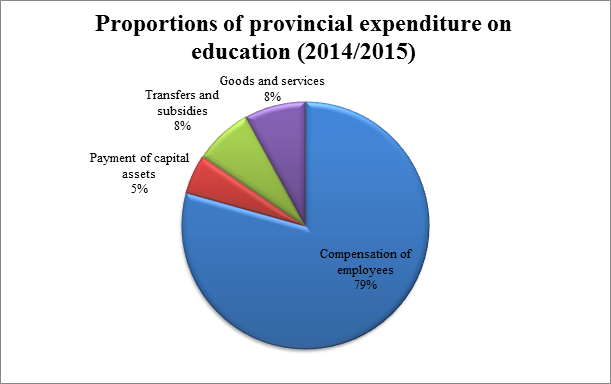An education on education
The topic of our failing education system seems to crop up frequently in social settings, more so when people know that you are an education researcher. Recently, I attended a social event, where I was told that the South African government spends 90% of its budget on teacher salaries. The claim came from an ex-teacher, who had “read it in the newspaper”. After I got over my initial shock, I thought that this cannot possibly be true, can it? How can this be the case in a developing country like South Africa, where the government and school administrators are trying to figure out how to educate as many learners as affordably and effectively as possible?
Whatever their backgrounds, South Africans are united in wanting to improve the education system for everyone in the country. I fully support such debates, as it is a good reflection of the value that we place on education. What surprises me are the “facts and figures” that are used to support arguments. And herein lies the purpose of our blog: to use current data to inform public debate on issues of education in South Africa.
Going back to the issue of education spending, the compensation of employees in public ordinary schools is administered at the provincial level. In the 2014/15 financial year, approximately R186 billion was allocated to the provinces for education, 79% of which was spent on the compensation of employees including educators, administrators and provincial department employees. Allocations for curriculum delivery, school infrastructure, educator supply and the professional development of educators are provided for in the national basic education budget.
Source: National Treasury, 2015
Seventy-nine percent is not alarmingly high when viewed in relation to other countries. An OECD report provides the compensation of employees as a percentage of total current expenditure in 2011. The figure for South Africa in 2011 was 78%. While not directly comparable to the South African figure, due to the exclusion of capital expenditure in the international calculations, these figures are broadly indicative of spending.
Compensation of employees as a percentage of total current expenditure in 2011
The figures above don’t necessarily address the second part of the problem which is: how effectively and efficiently the budget is allocated to address inequalities in education provision. Personnel expenditure accounts for most of the total education expenditure but is not strictly speaking allocated redistributively; that is, to redress past imbalances of resource allocation. On face value, the manner of allocating funds to schools based on poverty level (or quintile) does address the issues of redistribution and redress. An essay by my colleague argues against this conclusion, stating that the allocation of total government education spending is not directly linked to the level of need within schools but rather to the level of poverty in the surrounding community.
The National Norms and Standards for School Funding for 2015 allocated R1 116 per learner in the poorest 60% of schools in the country. Allocations for the more affluent schools are substantially lower at R559 for quintile 4 schools, and R193 for the richest 20% of schools in the country (this budget is indicated by the “transfers and subsidies” portion of the graph). However, the School Governing Body of each quintile 4 and 5 school has the option of supplementing the funding from the state in order to improve the quality of education offered at the respective schools, while quintile 1-3 schools are solely reliant on government funding. This manner of allocation assumes that all schools that fall within a quintile (or poverty band) share similarities in the socio-economic status of the learners who attend these schools. This is not necessarily the case, as quintile 4 and 5 schools in affluent, urban areas can easily supplement the government allocation by charging high school fees. Schools in smaller towns which cater to learners from outlying and generally poorer areas cannot do this as learners cannot afford the school fees charged. The Exemption of Parents from Payment of School Fees Policy is meant to cater for this situation by compensating schools which admit learners who genuinely cannot afford the fees. However, schools are only reimbursed if the school is the closest one to where the learner lives; this policy combined with the policy that states that a school cannot turn any learner away makes for an unsustainable situation for these schools. Are such policies actually disadvantaging schools? Perhaps such a situation calls for a re-thinking of how to allocate resources to schools based on the learner population rather than the area in which the school is located.
A policy innovation that has been piloted in Gauteng is the “Twinning of Schools Programme”. Here the provincial department of education matches wealthier and less wealthy public schools with the goal of sharing resources. The impact and consequences of this programme are yet to seen. An important consideration is how parents of learners in wealthier schools will react to any perceived decrease in resources or subsidization of the other learners.
The importance of education as a means of redressing past imbalances and developing the country cannot be over-stated. Understanding the budgetary allocations allows us to determine whether the government is on course to achieve these goals. During our series of blogs these, and other education issues, will be unpacked. So welcome, we hope you will find this education useful!
*Andrea Juan is a Post-doctoral fellow in the Education and Skills Development Research Programme of the HSRC.


